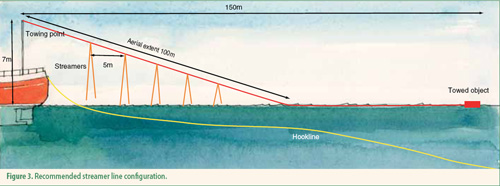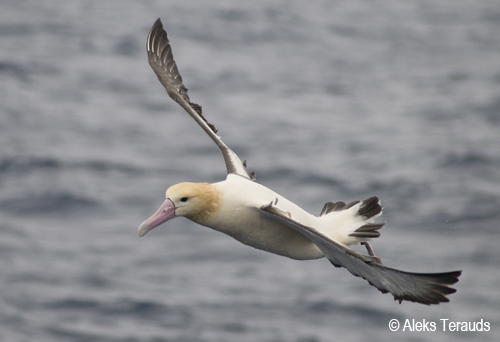The 10th Session of the Indian Ocean Tuna Commission‘s (IOTC) Working Party on Ecosystems and Bycatch (WPEB) was held in Yokohama, Japan, from 27 to 31 October 2014.
The meeting considered a paper prepared and presented by an ACAP intersessional group identifying the main elements that should be incorporated into a review of IOTC’s seabird conservation measure (Resolution 12/06 On reducing incidental bycatch of seabirds in longline fisheries), which came into force in July 2014. The WPEB noted that Contracting Parties and Cooperating Non-Contracting Parties (CPCs) of IOTC are required to collect and report data on seabird bycatch and bycatch mitigation measures, and highlighted the importance of these data for the review of Resolution 12/06. It was also agreed that CPCs should report seabird bycatch figures in their National Reports to the IOTC, together with associated observer programme information, such as the proportion of fishing effort sampled by observers.
The WPEB recognised the extensive distribution of many seabirds, and thus the value of evaluating the efficacy of seabird bycatch mitigation measures across different ocean basins and Regional Fisheries Management Organizations (RFMOs). It was agreed that it would be useful to develop and maintain linkages with other RFMOs, such as the International Commission for the Conservation of Atlantic Tunas (ICCAT) that are also in the process of developing methods to review the effectiveness of recently adopted seabird bycatch mitigation measures (click here).
At the meeting, BirdLife International presented an update on research undertaken collaboratively with the Republic of Korea on the use of Lumo Leads® in the Korean longline fleet, as well as a practical demonstration of the Fishtek Hook Pod.

At its 2013 meeting, the Ecologically Related Species Working Group (ERSWG) of the Commission for the Conservation of Southern Bluefin Tuna (CCSBT) recommended that an Effectiveness of Seabird Mitigation Measures Technical Group (SMMTG) be established to provide advice to the ERSWG on the best approaches for measuring and monitoring the effectiveness of seabird bycatch mitigation measures in Southern Bluefin Tuna Thunnus maccoyii longline fisheries.
The first meeting of the SMMTG took place in Tokyo, Japan, from 04 to 06 November 2014. The outcomes of the meeting will be used to update a scoping paper on the topic that will be presented to the next meeting of the ERSWG, which is due to take place in March 2015.
ACAP was represented at both meetings by the Convenor of its Seabird Bycatch Working Group, Anton Wolfaardt.
Reference:
ACAP Intersessional Group 2014. Preliminary identification of minimum elements to review the effectiveness of seabird bycatch mitigation regulations in tuna RFMOs. IOTC–2014–WPEB10–29. 14 pp.
Anton Wolfaardt, Convenor, ACAP Seabird Bycatch Working Group, 14 November 2014

 English
English  Français
Français  Español
Español 


